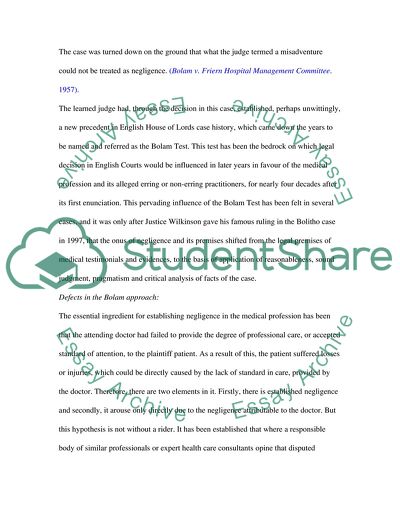Cite this document
(“Hospital Management Committee Essay Example | Topics and Well Written Essays - 2000 words”, n.d.)
Retrieved from https://studentshare.org/health-sciences-medicine/1542905-where-you-get-situation-which-involves-the-use-of-some-special-skill-or-competence-then-the-test-as-to-whether-there-has-been-negligence-or-not-is-not-the
Retrieved from https://studentshare.org/health-sciences-medicine/1542905-where-you-get-situation-which-involves-the-use-of-some-special-skill-or-competence-then-the-test-as-to-whether-there-has-been-negligence-or-not-is-not-the
(Hospital Management Committee Essay Example | Topics and Well Written Essays - 2000 Words)
https://studentshare.org/health-sciences-medicine/1542905-where-you-get-situation-which-involves-the-use-of-some-special-skill-or-competence-then-the-test-as-to-whether-there-has-been-negligence-or-not-is-not-the.
https://studentshare.org/health-sciences-medicine/1542905-where-you-get-situation-which-involves-the-use-of-some-special-skill-or-competence-then-the-test-as-to-whether-there-has-been-negligence-or-not-is-not-the.
“Hospital Management Committee Essay Example | Topics and Well Written Essays - 2000 Words”, n.d. https://studentshare.org/health-sciences-medicine/1542905-where-you-get-situation-which-involves-the-use-of-some-special-skill-or-competence-then-the-test-as-to-whether-there-has-been-negligence-or-not-is-not-the.


